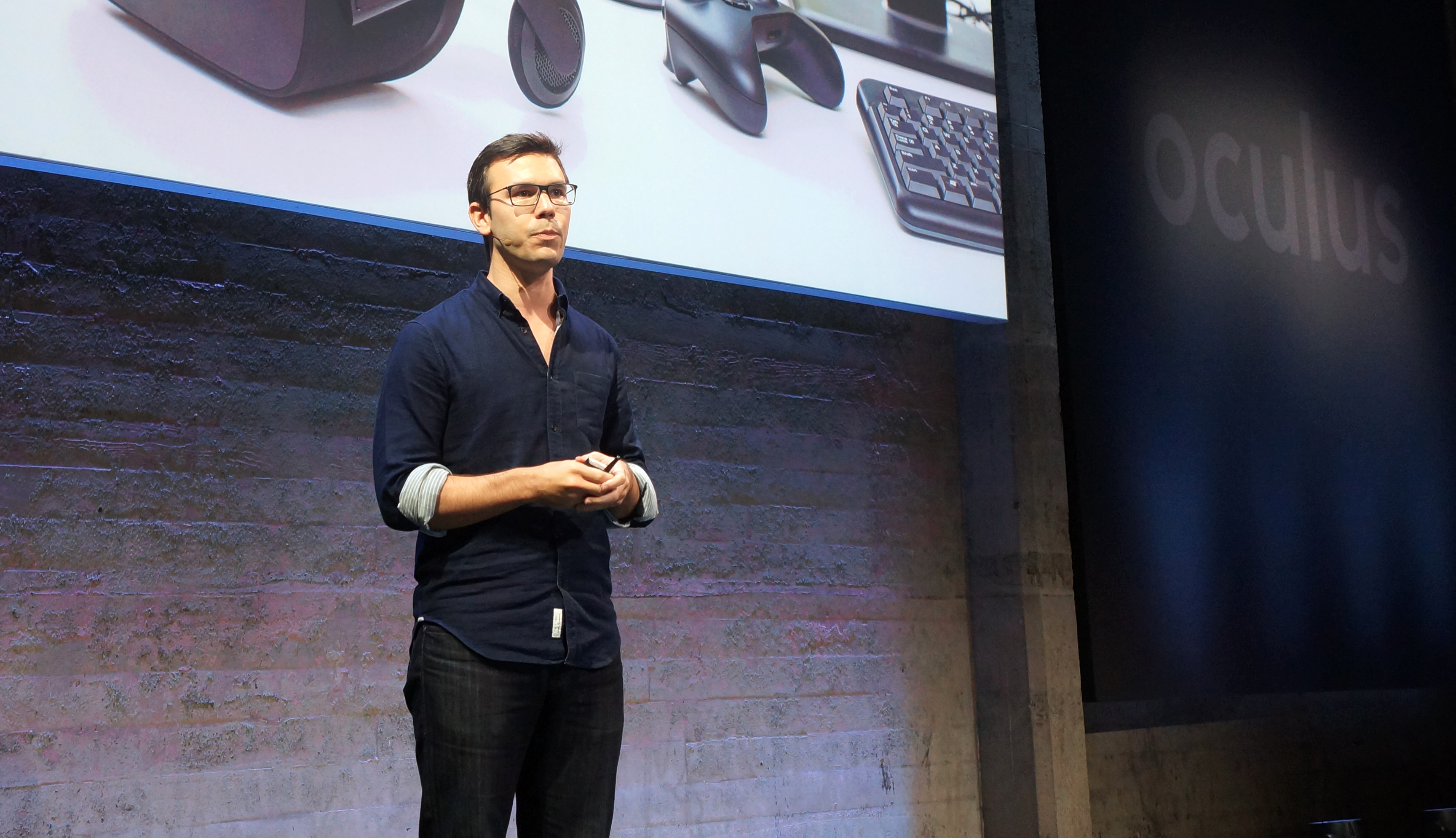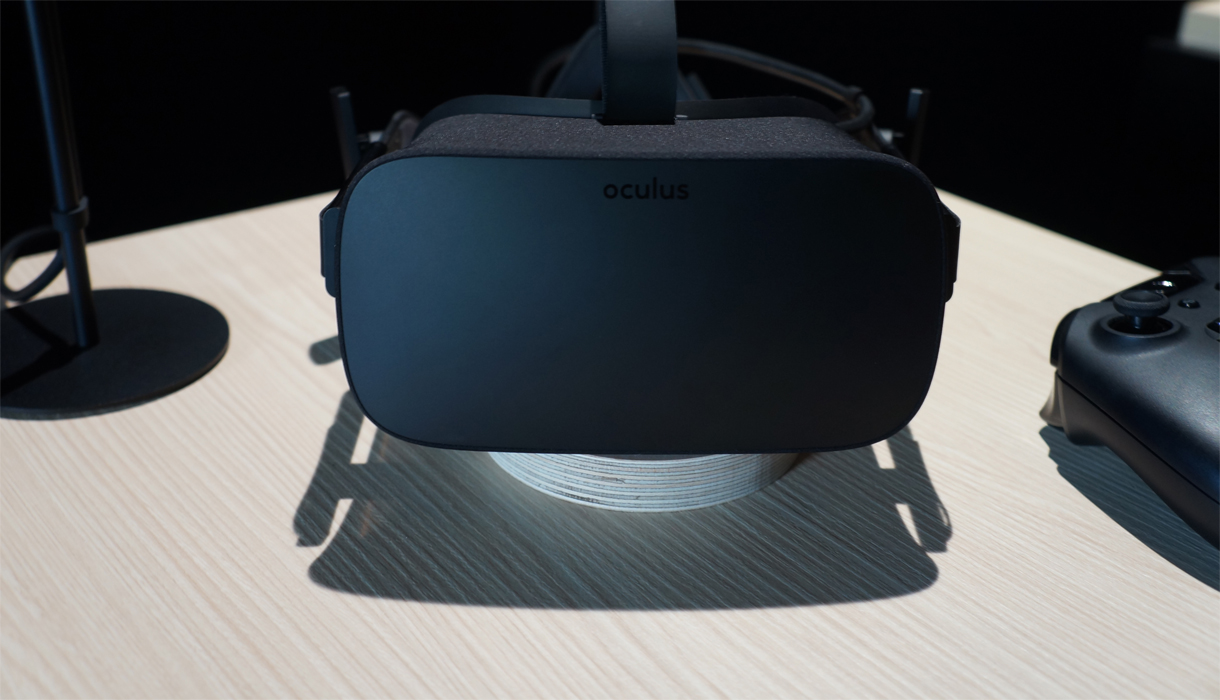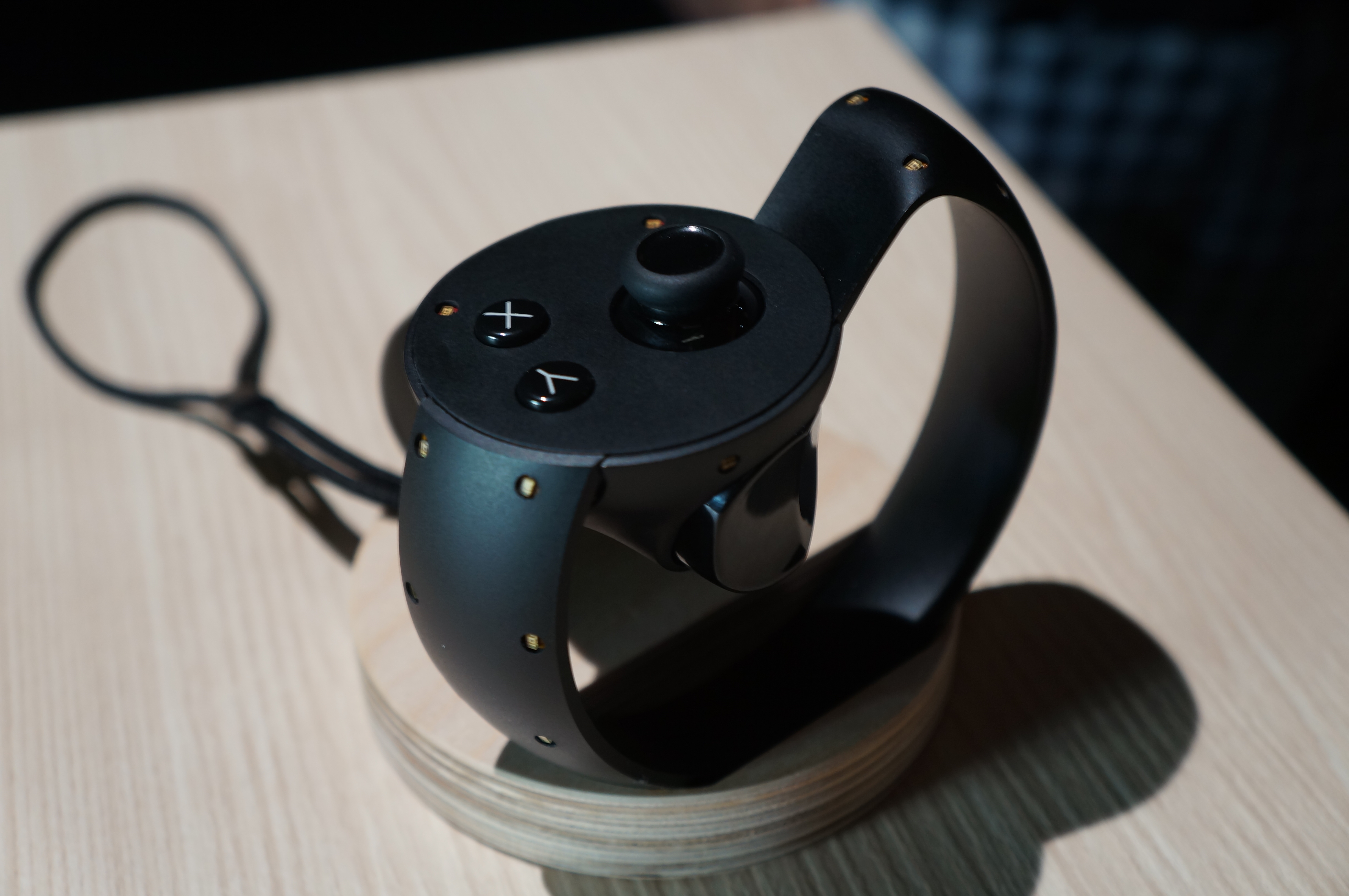Oculus VP Nate Mitchell on exclusive games and DX12's impact on VR

After trying out the final consumer Oculus Rift headset and the fantastic Oculus Touch controller at E3, I sat down with Nate Mitchell, Oculus' VP of product, for a short interview. Fresh off using both of those devices, my mind was full of questions about designing the Touch, the exclusivity of games available through Oculus Home, and what DX12 means for the future of VR.
PC Gamer: I feel like we could talk about a million things. What are you mainly focused on now that you’ve got headsets in manufacturing? What’s the next six months for Oculus?
Nate Mitchell, Oculus VP of Product: The next six months for us is all the polish to get to the consumer launch and bringing together the product really cohesively, which I think we’ve done to date, but we need to continue to do, right? So it’s system software, polishing Oculus Home, it’s getting all the kinks and every little tiny flaw worked out with the headset so when gamers get it in Q1, it all is perfect and just works, and there’s an awesome library of content to dive right into and start playing.
PCG: I think Oculus Home is an interesting thing for PC gamers. You can get PC games in a lot of places, but most people get them on Steam. I think there was probably an assumption two years ago that you'd be getting Oculus Rift games through Steam, and now that’s probably not the case. Can you talk about what it’s going to be like to publish games for Rift? Will they only be available through Home, or will that just be one place you can get them?
Mitchell: It differs from developer to developer. We’ll have some exclusive games that you can only get through Home. Probably a lot of our stuff, right? That just makes sense. If we’re making it, we want to sell it through our own store. But there will be stuff you can buy directly from developers, for example. We’ve said from the beginning that the Rift—the hardware itself—is an open platform, and that’s really important to us. We think it matches the PC ecosystem really well. So, for example, if we make a game together, we can sell it directly to a consumer, they can run it, they can play it on the Rift, awesome.
But on the flip side of that, we want to make sure it’s a great experience for us to get our game to Rift users really easily. If I’m a Rift user and I go home, I install all the Rift software, I put on the Rift, and I drop right into Home. We can put our game front and center in the store right there, they can buy it, install it, play it, all without taking the headset off. That’s an experience that you can’t get through Steam, you can’t get anywhere, really, even from us as developers. We really want to make sure that user experience is as seamless as possible, for users and for devs. Does that make sense?
PCG: Yeah.
Keep up to date with the most important stories and the best deals, as picked by the PC Gamer team.
Mitchell: In terms of publishing on our store, we’ve already launched our platform on GearVR, so all the Oculus Home experience and the Oculus Store that runs on Gear today is the exact same backend that’s powering the Rift store when it comes online. So we have developers who’ve published games to our store who are making money today, and we’re going to be bringing basically all that same functionality to the Rift.

PCG: In the game demo I did, I really liked Airmech—the perspective on it, it hits that toy diorama thing. One thing I noticed about it, though, is that I felt like I needed to be on a swivel chair. There ended up being parts of the world behind me that I couldn’t see. So where are you at now on the standing, walking, looking around thing? For a long time you were showing that with Crescent Bay while also saying, "don’t do this," kind of.
Mitchell: We designed the Rift’s tracking system, the IR constellation tracking system, for both seated and standing. We want to support both those experiences and we want to let developers and gamers decide how they want to use the Rift. One really key tenet, though, is making it really easy to use and set up. The goal is that you put that on your desk, and you put the headset on, and you’re basically good to go. Yes, you plug in a few cables too, but other than that you’re basically good to go. If you want to stand up you can, if you want to sit down you can. It’s going to depend on the experience. Ultimately, what I think is most likely is we’re going to see developers basically saying, "Hey, we see that you're sitting down at the moment, this game is actually a standing experience, please stand up." Or, "Hey, you’re standing up, please sit down."
We’ve already seen some developers on Gear say in their tutorials, "This game is best played in a swivel chair." I think we’re all still trying to figure out exactly what works best. I think Airmech, for example, doesn’t work as well in that chair in that experience. But that’s the choice the developers made. I remember the first time i played, I was like "Holy moly, there’s stuff behind me back here!" But that’s the way that they wanted it. They wanted it to be a surprise. And it’s very intentional.
So, I think we’re going to continue to evolve our best practices, and we’re going to see developers use novel ways to communicate what they want us to do. But ultimately, if you want to stand up, if you want to sit down, regardless, the Rift’s going to be the best VR gaming system available.
PCG: The concept makes me think, wireless: when could it possibly happen? Can you talk a little about, as hard as it was to get VR to where it is now, the huge hurdle that wireless brings?
Mitchell: Wireless is challenging on a number of fronts. We’re still far off from wireless in terms of the headset. The Oculus Touch is wireless today. In terms of latency, in terms of power consumption, and then in terms of weight, with all of those things combined, those are probably the biggest challenges. It's hard to argue that that’s the right path forward today, just because all of those constraints, compromises you have to make are pretty painful trade-offs across the board. I think we will get there over the next X number of years, and we will see more wireless headsets.
PCG: Can we talk about Touch a little bit? I thought that was really great. It’s intuitive for hand motion. One thing I didn’t really do in the toy box demo was use the face buttons much. What kind of games are going to use face buttons versus hand motion? I’m trying to build a picture of what you’re going to do with these things.
We included traditional controls like analog sticks, triggers, and the face buttons to enable hybrid experiences. Those are really proven input mechanisms for a bunch of stuff. Did you mess with the tank in there?
PCG: Yeah.
Mitchell: So the tank works really, really well with the analog stick. If you didn’t have analog sticks you couldn’t drive that tank. Well, imagine that A and B make the tank hop or hover, or switch weapons. You need a set of buttons there that developers can tap into to add additional functionality. I don’t know exactly how developers are going to use it, because it’s going to depend from game to game, but I think having those things is super important. It’s something we talked about a lot. "Do we want to go no analog sticks? Do we want one button? No buttons?" Ultimately, we think that having a controller that has a lot of robust functionality, where developers can go deep and make experiences that are deep, and the extra interactions that they allow for are deep, is super important to having compelling, complex games. As a hardcore gamer myself, I think that’s a requirement.

PCG: I’ve been seeing a lot of the new graphics cards stuff lately, and they’re all talking big game about DX12 and their VR features, we’ve got Windows 10 coming really soon, so do you know anything about DX12 that’s interesting to talk about in terms of what it’s going to do for VR?
Mitchell: Part of the partnership with Microsoft is not only optimizing Windows and Windows 10 to be an awesome platform for Rift, but also working with the DirectX team to make sure the Rift has everything it needs to be super high performance, super low latency across the board.
I can’t speak to any of the changes we’re making right now, but it is real. There is stuff there, DirectX wasn’t designed for virtual reality to begin with, it definitely wasn’t designed for a VR headset and neither was Windows, and so there are things that we can do that we want to do to make it a better user experience, to get more performance out of it. We made a lot of modifications to OpenGL ES when we did Samsung Gear VR in the same vein.
PCG: Some Carmack wizardry.
Mitchell: Exactly. And so we want to do the same sort of stuff to DirectX, and all the work we’re doing there is going to benefit other VR headsets and AR headsets out there too. We’re sort of trying to push the boundaries and blaze this path forward with Microsoft. But anyone else who shows up can plug into the same extensions and get the benefits. At the end of the day it’s really a good thing for gamers ... Nvidia, AMD, and Microsoft, what they’re doing in partnership with us is going to make a big difference for future graphics cards.
PCG: When you talk about performance improvements, is that all along the same lines as the multi-GPU stuff?
Mitchell: Not exactly. It’s more around the way we’re interfacing with, especially the GPU, and on Windows the display devices. For example, if you read Atman Binstock, he’s the chief architect at Oculus, and he wrote an article “Powering the Rift” and it talks about how we arrived at the recommended specification for Rift. One of the things we talk about in the article is that the GPUs historically are really designed not for latency, but for performance. So we have all these changes we want to make to optimize for latency and minimize that as much as possible rather than having, "Well, yeah, we can buffer six or seven frames, because that’s fine." No, we want to buffer zero frames.
So really, working with GPU manufacturers that have these new pipelines that are really focused on minimizing latency is super, super critical. One of the reasons we went with sort of a higher specification for the recommended specification, which is the Nvidia 970, AMD 290X group, is so that developers have more horsepower under the hood to make great experiences, because the rendering requirements around the GPU and performance are strenuous, to say the least. To get a great looking game, you’re going to need a little bit more horsepower.
PCG: Thanks for talking with us, Nate.

Wes has been covering games and hardware for more than 10 years, first at tech sites like The Wirecutter and Tested before joining the PC Gamer team in 2014. Wes plays a little bit of everything, but he'll always jump at the chance to cover emulation and Japanese games.
When he's not obsessively optimizing and re-optimizing a tangle of conveyor belts in Satisfactory (it's really becoming a problem), he's probably playing a 20-year-old Final Fantasy or some opaque ASCII roguelike. With a focus on writing and editing features, he seeks out personal stories and in-depth histories from the corners of PC gaming and its niche communities. 50% pizza by volume (deep dish, to be specific).

